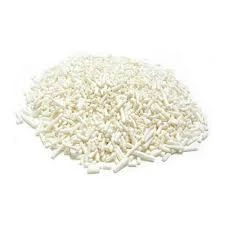
Exploring the Role of Amylase as a Food Additive in Culinary Practices
Understanding Amylase as a Food Additive
Amylase is an enzyme that plays a vital role in the breakdown of starches into sugars, making it an essential component in various industries, particularly in food production. As a food additive, amylase assists in modifying the texture, flavor, and shelf-life of many products. This article explores the properties, functions, and applications of amylase in the food industry.
What is Amylase?
Amylase is an enzyme that catalyzes the hydrolysis of starch into sugars. It is produced in various forms, with alpha-amylase, beta-amylase, and glucoamylase being the most commonly studied. Alpha-amylase is widely utilized in the food industry because of its ability to break down complex carbohydrates quickly. This enzyme can be sourced from various organisms, including plants, bacteria, and fungi.
Functions of Amylase in Food Production
1. Starch Breakdown The primary function of amylase is to convert starches contained in grains, potatoes, and other starchy foods into simpler sugars, which can enhance the sweetness and flavor of food products.
2. Improving Texture and Consistency In products such as bread, amylase helps achieve the right dough consistency, contributing to a more desirable texture. It also aids in improving the moisture retention of baked goods, which extends their freshness and shelf life.
3. Fermentation Aid In brewing and winemaking, the breakdown of starches by amylase is crucial for fermentation. The sugars released during this process serve as the substrate for yeast, ultimately influencing the alcohol content and flavor profile of the beverages.
4. Sweetener Production Amylase is essential in producing high-fructose corn syrup (HFCS), a widely used sweetener in various food products. The enzyme allows companies to transform corn starch into sugars that are significantly sweeter than glucose, enhancing flavor in various applications.
Applications of Amylase in Food
amylase food additive

The applications of amylase are diverse, spanning across different food products
. Here are a few noteworthy examples- Bakery Products Amylase is added to dough to improve the fermentation process. It enhances dough handling properties and results in a finer crumb structure in bread and pastries.
- Dairy Products In the production of certain dairy products, amylase can be used to enhance the texture and efficiency of processes such as making yogurt.
- Beverages In the brewing industry, alpha-amylase breaks down starches in malted grains, which is critical for producing fermentable sugars during fermentation.
- Confectionery Amylase improves the shelf life and chewiness of candies by ensuring the sugars are well balanced and preventing crystallization during the production process.
Safety and Regulatory Aspects
The use of amylase as a food additive is generally recognized as safe (GRAS) by regulatory agencies, including the U.S. Food and Drug Administration (FDA). However, the enzymes used must be sourced appropriately, and manufacturers must comply with quality standards to ensure food safety.
Conclusion
Amylase is a versatile and valuable food additive that enhances the flavor, texture, and shelf life of various products. As consumers continue to demand high-quality, flavorful foods, the importance of enzymes like amylase will undoubtedly increase. Its applications in the bakery, beverage, and dairy industries demonstrate its critical role in modern food production. With ongoing research and developments, the understanding and utilization of amylase will continue to evolve, contributing to innovation in the culinary world. Understanding the functions and benefits of amylase enables consumers to appreciate the science behind the food they enjoy every day.
-
Pure Sodium Dichloroisocyanurate Dihydrate | Powerful DisinfectantNewsAug.29,2025
-
Industrial Chemicals: Quality & Purity for Every IndustryNewsAug.28,2025
-
Nitrile Rubber Honoring Strict Production StandardsNewsAug.22,2025
-
Aspartame Ingredients Honoring Food Safety ValuesNewsAug.22,2025
-
Fertilizer for Balanced Plant NutritionNewsAug.22,2025
-
Cyanide Gold Processing with High Purity AdditivesNewsAug.22,2025
-
Formic Acid in Textile Dyeing ApplicationsNewsAug.22,2025
Hebei Tenger Chemical Technology Co., Ltd. focuses on the chemical industry and is committed to the export service of chemical raw materials.
-

view more DiethanolisopropanolamineIn the ever-growing field of chemical solutions, diethanolisopropanolamine (DEIPA) stands out as a versatile and important compound. Due to its unique chemical structure and properties, DEIPA is of interest to various industries including construction, personal care, and agriculture. -

view more TriisopropanolamineTriisopropanolamine (TIPA) alkanol amine substance, is a kind of alcohol amine compound with amino and alcohol hydroxyl, and because of its molecules contains both amino and hydroxyl. -

view more Tetramethyl Thiuram DisulfideTetramethyl thiuram disulfide, also known as TMTD, is a white to light-yellow powder with a distinct sulfur-like odor. It is soluble in organic solvents such as benzene, acetone, and ethyl acetate, making it highly versatile for use in different formulations. TMTD is known for its excellent vulcanization acceleration properties, which makes it a key ingredient in the production of rubber products. Additionally, it acts as an effective fungicide and bactericide, making it valuable in agricultural applications. Its high purity and stability ensure consistent performance, making it a preferred choice for manufacturers across various industries.





